Intel to Develop Discrete GPUs, Hires Raja Koduri as Chief Architect & Senior VP
by Ryan Smith on November 8, 2017 5:15 PM EST- Posted in
- GPUs
- Intel
- Raja Koduri
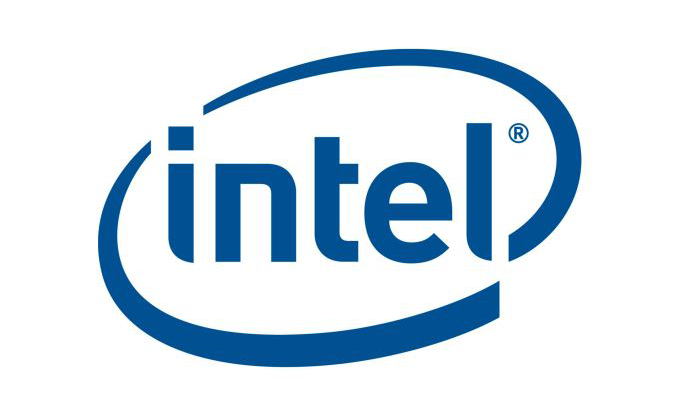
On Monday, Intel announced that it had penned a deal with AMD to have the latter provide a discrete GPU to be integrated onto a future Intel SoC. On Tuesday, AMD announced that their chief GPU architect, Raja Koduri, was leaving the company. Now today the saga continues, as Intel is announcing that they have hired Raja Koduri to serve as their own GPU chief architect. And Raja's task will not be a small one; with his hire, Intel will be developing their own high-end discrete GPUs.
Starting from the top and following yesterday’s formal resignation from AMD, Raja Koduri has jumped ship to Intel, where he will be serving as a Senior VP for the company, overseeing the new Core and Visual Computing group. As a chief architect and general manager, Intel is tasking Raja with significantly expanding their GPU business, particularly as the company re-enters the discrete GPU field. Raja of course has a long history in the GPU space as a leader in GPU architecture, serving as the manager of AMD’s graphics business twice, and in between AMD stints serving as the director of graphics architecture on Apple’s GPU team.
Meanwhile, in perhaps the only news that can outshine the fact that Raja Koduri is joining Intel, is what he will be doing for Intel. As part of today’s revelation, Intel has announced that they are instituting a new top-to-bottom GPU strategy. At the bottom, the company wants to extend their existing iGPU market into new classes of edge devices, and while Intel doesn’t go into much more detail than this, the fact that they use the term “edge” strongly implies that we’re talking about IoT-class devices, where edge goes hand-in-hand with neural network inference. This is a field Intel already plays in to some extent with their Atom processors on the GPU side, and their Movidius neural compute engines on the dedicated silicon sign.
However in what’s likely the most exciting part of this news for PC enthusiasts and the tech industry as a whole, is that in aiming at the top of the market, Intel will once again be going back into developing discrete GPUs. The company has tried this route twice before; once in the early days with the i740 in the late 90s, and again with the aborted Larrabee project in the late 2000s. However even though these efforts never panned out quite like Intel has hoped, the company has continued to develop their GPU architecture and GPU-like devices, the latter embodying the massive parallel compute focused Xeon Phi family.
Yet while Intel has GPU-like products for certain markets, the company doesn’t have a proper GPU solution once you get beyond their existing GT4-class iGPUs, which are, roughly speaking, on par with $150 or so discrete GPUs. Which is to say that Intel doesn’t have access to the midrange market or above with their iGPUs. With the hiring of Raja and Intel’s new direction, the company is going to be expanding into full discrete GPUs for what the company calls “a broad range of computing segments.”
Reading between the lines, it’s clear that Intel will be going after both the compute and graphics sub-markets for GPUs. The former of course is an area where Intel has been fighting NVIDIA for several years now with less success than they’d like to see, while the latter would be new territory for Intel. However it’s very notable that Intel is calling these “graphics solutions”, so it’s clear that this isn’t just another move by Intel to develop a compute-only processor ala the Xeon Phi.
NVIDIA are at best frenemies; the companies’ technologies complement each other well, but at the same time NVIDIA wants Intel’s high-margin server compute business, and Intel wants a piece of the action in the rapid boom in business that NVIDIA is seeing in the high performance computing and deep learning markets. NVIDIA has already begun weaning themselves off of Intel with technologies such as the NVLInk interconnect, which allows faster and cache-coherent memory transfers between NVIDIA GPUs and the forthcoming IBM POWER9 CPU. Meanwhile developing their own high-end GPU would allow Intel to further chase developers currently in NVIDIA’s stable, while in the long run also potentially poaching customers from NVIDIA’s lucrative (and profitable) consumer and professional graphics businesses.
To that end, I’m going to be surprised if Intel doesn’t develop a true top-to-bottom product stack that contains midrange GPUs as well – something in the vein of Polaris 10 and GP106 – but for the moment the discrete GPU aspect of Intel’s announcement is focused on high-end GPUs. And, given what we typically see in PC GPU release cycles, even if Intel does develop a complete product stack, I wouldn’t be too surprised if Intel’s first released GPU was a high-end GPU, as it’s clear this is where Intel needs to start first to best combat NVIDIA.
More broadly speaking, this is an interesting shift in direction for Intel, and one that arguably indicates that Intel’s iGPU-exclusive efforts in the GPU space were not the right move. For the longest time, Intel played very conservatively with its iGPUs, maxing out with the very much low-end GT2 configuration. More recently, starting with the Haswell generation in 2013, Intel introduced more powerful GT3 and GT4 configurations. However this was primarily done at the behest of a single customer – Apple – and even to this day, we see very little OEM adoption of Intel’s higher performance graphics options by the other PC OEMs. The end result has been that Intel has spent the last decade making the kinds of CPUs that their cost-conscious customers want, with just a handful of high-performance versions.
I would happily argue that outside of Apple, most other PC OEMs don’t “get it” with respect to graphics, but at this juncture that’s beside the point. Between Monday’s strongly Apple-flavored Kaby Lake-G SoC announcement and now Intel’s vastly expanded GPU efforts, the company is, if only finally, becoming a major player in the high-performance GPU space.
Besides taking on NVIDIA though, this is going to put perpetual underdog AMD into a tough spot. AMD’s edge over Intel for the longest time has been their GPU technology. The Zen CPU core has thankfully reworked that balance in the last year, though AMD still hasn’t quite caught up to Intel here on peak performance. The concern here is that the mature PC market has strongly favored duopolies – AMD and Intel for CPUs, AMD and NVIDIA for GPUs – so Intel’s entrance into the discrete GPU space upsets the balance on the latter. And while AMD is without a doubt more experienced than Intel, Intel has the financial and fabrication resources to fight NVIDIA, something AMD has always lacked. Which isn’t to say that AMD is by any means doom, but Intel’s growing GPU efforts and Raja’s move to Intel has definitely made AMD’s job harder.
Meanwhile, on the technical side of matters, the big question going forward with Intel’s efforts is over which GPU architecture Intel will use to build their discrete GPUs. Despite their low performance targets, Intel’s Gen9.5 graphics is a very capable architecture in terms of features and capabilities. In fact, prior to the launch of AMD’s Vega architecture a couple months back, it was arguably the most advanced PC GPU architecture, supporting higher tier graphics features than even NVIDIA’s Pascal architecture. So in terms of features alone, Gen9.5 is already a very decent base to start from.
The catch is whether Gen9.5 and its successors can efficiently scale out to the levels needed for a high-performance GPU. Architectural scalability is in some respects the unsung hero of GPU architecture design, as while it’s kind of easy to design a small GPU architecture, it’s a lot harder to design an architecture that can scale up to multiple units in a 400mm2+ die size. Which isn’t to say that Gen9.5 can’t, only that we as the public have never seen anything bigger than the GT4 configuration, which is still a relatively small design by GPU standards.
Though perhaps the biggest wildcard here is Intel’s timetable. Nothing about Intel’s announcement says when the company wants to launch these high-end GPUs. If, for example, Intel wants to design a GPU from scratch under Raja, then this would be a 4+ year effort and we’d easily be talking about the first such GPU in 2022. On the other hand, if this has been an ongoing internal project that started well before Raja came on board, then Intel could be a lot closer. Given what kind of progress NVIDIA has made in just the last couple of years, I can only imagine that Intel wants to move quickly, and what this may boil down to is a tiered strategy where Intel takes both routes, if only to release a big Gen9.5(ish) GPU soon to buy time for a new architecture later.
In directing these tasks, Raja Koduri has in turn taken on a very big role at Intel. Until recently, Intel’s graphics lead was Tom Piazza, a Sr. Fellow and capable architect, but also an individual who was never all that public outside of Intel. By contrast, Raja will be a much more public individual thanks to the combination of Intel’s expanded GPU efforts, Raja’s SVP role, and the new Core and Visual Computing group that has been created just for him.
For what Intel is seeking to do, it’s clear why they picked Raja, given his experience inside and outside of AMD, and more specifically, with integrated graphics at both AMD and Apple. The flip side to that however is that while Apple’s graphics portfolio boomed under Raja during his time at the company, his most recent AMD stint didn’t go quite as well. AMD’s Vega GPU architecture has yet to live up to all of its promises, and while success and failure at this level is never the responsibility of a single individual, Intel will certainly be looking to have a better launch than Vega. Which, given the company’s immense resources, is definitely something they can do.
But at the end of the day, this is just the first step for Intel and for Raja. By hiring an experienced hand like Raja Koduri and by announcing that they are getting into high-end discrete GPUs, Intel is very clearly telegraphing their intent to become a major player in the GPU space. Given Intel’s position as a market leader it’s a logical move, and given their lack of recent discrete GPU experience it’s also an ambitious move. So while this move stands to turn the PC GPU market as we know it on its head, I’m looking forward to seeing just what a GPU-focused Intel can do over the coming years.
Source: Intel



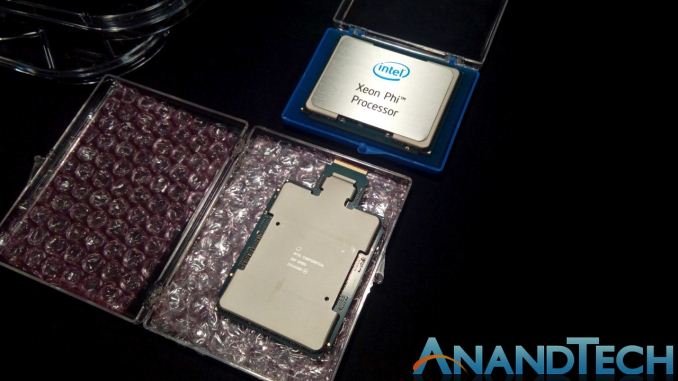
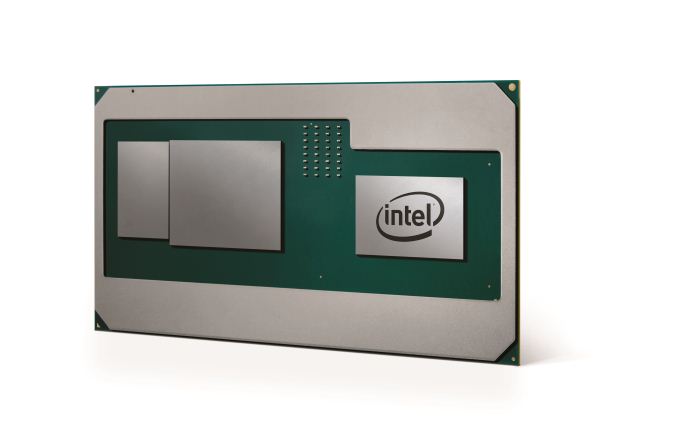
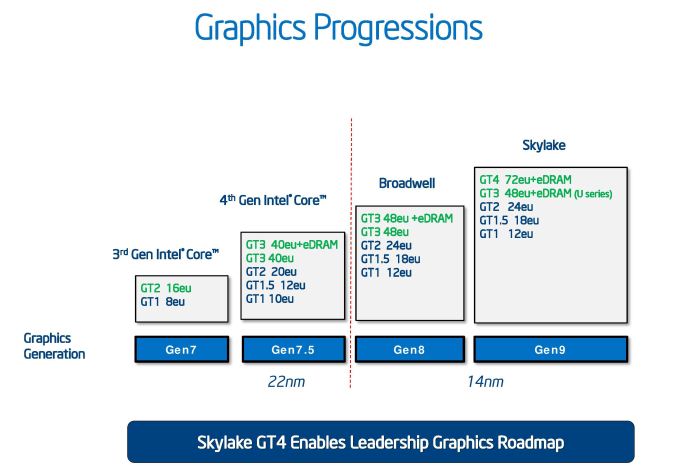
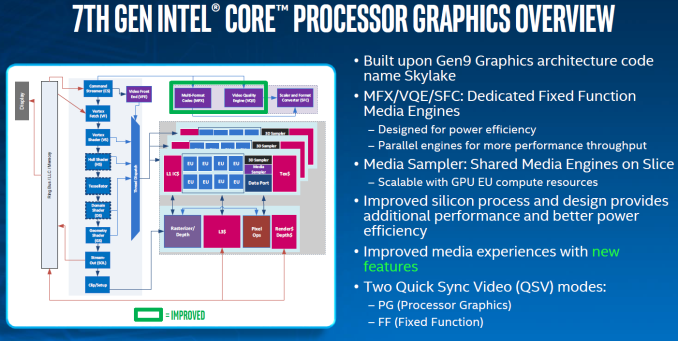








200 Comments
View All Comments
lmcd - Wednesday, November 8, 2017 - link
GPU technology is where Intel's fabrication lead (which is still massive, if that isn't clear) can be abused the most dramatically.Spunjji - Thursday, November 9, 2017 - link
This. I'm quite interested to see how it pans out. My understanding is that GPUs benefit more from a process tuned for density than one tuned for outright speed / minimal leakage, so it will be at odds with Intel's most recent directions in turns of fabrication... but then who knows, maybe they'll bring something amazing to the Mobile marketplace and be content with merely competitive (and "synergistic" at the top end.amrs - Thursday, November 9, 2017 - link
The manufacturing lead for future products would be easier to believe in if Intel were able to actually manufacture their FPGAs at 10 nm but it doesn't look like they can. Stratix 10 is not shipping, only a couple of Arria 10s.name99 - Friday, November 10, 2017 - link
(a) Uh Intel's "massive" fabrication lead is actually no longer clear. Sure, sure, there 10nm claims are better than TSMC/Samsung's 10nm claims. But TSMC are SHIPPING 10nm today, and may well be shipping 7nm before Intel ships anything in volume at 10nm.(b) There is a political angle to this that no-one seems to want to consider. How do the Phi group and the Nervana group react? Jensen Huang (having exactly the same thought as I had when I heard this!) seems to be the only person who has noticed this, and Toms Hardware the only journalists who understood the point of what he said:
"If you have four or five different architectures to support, that you offer to your customers, and they have to pick the one that works the best, you are essentially are saying that you don't know which one is the best [.....] If there's five architectures, surely over time, 80% of them will be wrong. I think that our advantage is that we are singularly focused."
There are multiple issues to his point.
- In the past Intel has repeatedly crippled devices (and thus its entry into new markets) because of an obsession with x86. Atom/Quark are obvious, but I'd argue the same for Larrabee [would be a much more successful, much better throughout processor with a leaner ISA], and for IA64 [substantial reason for failure was dicking around with stupid attempts to make it x86 compatible].
+ Raja seems interested in something more than just a GPU, but a generic throughput processor. So what ISA will it execute? And how does it not compete with Phi?
+ How many HW architectures (and SW architectures) is Intel willing to support? Plenty of people complain that their existing Gen drivers are lousy. They're going to create a whole new ISA (and compiler? and drivers? and optimized libraries?) for a new architecture? Meanwhile doing the same thing also for Movidius? And Nervana?
+ What is Intel eventually going to ship? Five very different SKUs all trying to sell into the just not that large HPC/data warehouse market? For a company that complains that mask sets costs so much it's sensible to reuse them for the same die selling different numbers of cores, this seems a very strange direction to go.
Everyone is excited right now because Intel is covering every buzzword (except AR...)
But no company is large enough to do everything, and this looks to me like Intel being stretched way too thin, floundering born of desperation, not a coherent plan.
tipoo - Wednesday, November 8, 2017 - link
Larrabee was a product of their post Itanium x86 or bust ptsd. Hopefully this is more sane. The Gen graphics already aren't bad per watt.Pinn - Wednesday, November 8, 2017 - link
Can confirm that ptsd.CharonPDX - Wednesday, November 8, 2017 - link
Well, third crack - I wouldn't call it third SERIOUS crack...i740 was more "proof of concept to show AGP works."
Larrabee was canceled as a GPU before it even got as far as prototype graphics card stage.
extide - Thursday, November 9, 2017 - link
Oh no, there were prototypes made, and they even worked. The Knights Corner product that was released to retail actually still had the fixed function texture units still in the silicon, you can see them in a die shot. The performance just was never competitive.Check out this blog post for a great read: https://tomforsyth1000.github.io/blog.wiki.html#%5...
CheapSushi - Thursday, November 9, 2017 - link
And what's wrong with that? I don't understand your point.tipoo - Wednesday, November 8, 2017 - link
Reading between the lines a bit, I think Raja was trying to get RTG spun out or bought out by a wealthier party, but that didn't work out. So Intel sniped him after a ho-hum Vega performance instead.